Narmada is a sacred river in India, which is considered the lifeline of the state of Madhya Pradesh and Gujarat, and is also known as Rewa (Reva). In Hinduism, important and sacred rivers are worshipped as Goddesses. River Narmada is among the 5 major rivers of India. Narmada Jayanti is celebrated to commemorate the birth anniversary of the river Narmada on earth. As per Hindu lunar calendar, Narmada Jayanti celebration falls each year on the Saptami (seventh day) of Shukla Paksha (waxing Moon phase) in the month of Magha (Gregorian January-February), which coincides with Ratha Saptami festival, the birth anniversary of Surya Dev.
Why Narmada Jayanti is Celebrated
Narmada Jayanti, celebrated with grandeur and devotion, is primarily centered around Amarkantak, the sacred source of the Narmada River, where devotees gather to pay homage to the holy river and her divine form, Narmada Devi or Narmada Maiyya. Revered as the daughter of Bhagwan Shiva, Narmada Devi is lovingly worshipped as Shankari, the benevolent goddess who purifies and protects. Devotees from far and wide take a ritualistic dip in the river, believing that its holy waters wash away sins and bring spiritual liberation. Flowers, diyas, and prayers are offered along the riverbanks as part of the vibrant Narmada Jayanti Puja, which reflects the deep faith and cultural richness surrounding this celebration.
The divine aura of Goddess Narmada is beautifully captured in her iconography, where she is depicted seated gracefully on a lotus, mounted on a crocodile (Makar). Her four arms symbolize her cosmic power and nurturing essence: the Abhaya Mudra in her upper right hand offers blessings and protection; a Kalash adorned with a coconut and mango leaves in her upper left hand signifies abundance; a Shivling in her lower left hand emphasizes her connection to Bhagwan Shiva; and a Trident (Trishul) in her lower right hand represents strength and divine authority.
The festival embodies the harmony between nature and divinity, as the Narmada River is not just a water body but a living, sacred force for devotees. Narmada Jayanti is a celebration of faith, purification, and gratitude—a reminder of the timeless relationship between humans, rivers, and the divine.
Festival Date, Time, Muhurat & Tithi
Narmada Jayanti on Sunday, January 25, 2026
Saptami Tithi Begins - 12:39 AM on Jan 25, 2026
Saptami Tithi Ends - 11:10 PM on Jan 25, 2026
Note: Devotees begin their Narmada Jayanti rituals at sunrise, making it a key time for the day's observances. Sunrise and sunset vary by region and date due to India's geographical diversity. For exact timings, refer to local astronomical data.
Narmada Jayanti Significance
The festival of Narmada Jayanti is to celebrate the birth of Narmada river and is a day to worship Her. Ancient texts say that the mere sight or “Darshan” of river Narmada is pious and has purifying effect. Taking a dip in Her pure water on Narmada Jayanti is said to alleviate sins of devotees, and venerating Her, bestows blessings of peace, prosperity and happiness. The main Narmada Jayanti importance is that devotees take a dip in the river on this auspicious day to liberate themselves from sins. Since Ratha Saptami also falls on the same day, it makes the day of Narmada Jayanti very powerful.
Goddess Narmada is considered Bhagwan Shiva’s daughter and legend has it that when She descended on earth or took birth on earth, on the command of Bhagwan Shiva, She had asked the divine Lord for some boons. The boons were; Narmada would not be destroyed in any condition or situation, even if the earth faced “Pralay” (holocaust situation). Every stone found in the shape of Shivlinga in the river would be worshipped without doing “Pranprathishta”(consecration). Gods and Goddesses should reside on the banks of the river. Bhagwan Shiva granted Her the boons, and is said to have also blessed Her saying that even seeing Her will purify devotees of sins. As per the Skanda Puranas, river Narmada remained stable even in “Pralay”. The natural Shivling shaped stones called Narmada linga and Bana linga, found in the river Narmada are worshipped without performing the ritualistic “Pranprathishta”. The self-manifested Narmada linga has the highest vibration among all stones that exist on earth and is the best Shivlinga to worship. The numerous temples and pilgrim places on the banks of Narmada are residents of Gods and Goddesses.
It is believed that performing Shradh, Pitru Tarpan, Pind Daan in any place on the banks of Narmada blesses the person with merits which are Akshaya(indestructible), as Narmada has also been described as the daughter of ancestors in the Vayu Purana. Her banks have places of meditation for Sanyasis (ascetics), since ancient times and therefore She is also called Tapomayi. Respected Rishis, like Rishi Markandeya, Kapil Muni, Rishi Valmiki, and other Rishis had their “Ashram” on the banks of the sacred river Narmada. The Puranas profusely praise Narmada river as one of the most pious rivers, which further adds to the Narmada Jayanti importance and celebrations and the benefits of worshipping Her.
Pilgrims participate in the popular Narmada Parikrama, which means, to circumambulating river Narmada. It is one of its kind as the Parikrama of no other sacred river is done. The Parikrama starts from the origin at Amarkantak and continues down the length of the Narmada river, with beautiful temples and other pilgrim places and ghats. The Parikrama can be started from any of the places on the banks of the river, but a full circle has to be completed and the devotee has to return back to the place where he/she started the Parikrama. Devotees, Sadhus willingly participate in the Narmada Parikrama, and though a daunting task but some devotees travel on foot covering the entire distance of the Parikrama. Narmada Parikrama is considered highly meritorious and blesses with spiritual rewards.
Narmada Jayanti Legends and Stories
There are different versions of Narmada Jayanti stories. One version about the birth of Narmada river says that Lord Brahma shed tears which gave birth to the Narmada and Brahmaputra rivers.
The most accepted legend of Narmada Jayanti is about Bhagwan Shiva. It narrates that once when Bhagwan Shiva was in intense meditation, His perspiration collected and later flowed as river Narmada. In another version of the story, it says, Bhagwan Shiva went into a state of trance while sitting in Amarkantak (origin of Narmada river) and an enchanting female form was birthed by Him in the trance state. It says that it evoked feelings of tenderness in Him when He saw the beautiful female form He created and thus named Her Narmada, from the Sanskrit word “Namra”. As the daughter of Shiva, She is also Shankari and was extremely beautiful.
There is another story about the birth of Narmada Devi on earth. King Pururava once sensed that the Tarpan he was doing for ancestors were not successful. He remembered that some holy sages had told Him about the purity and power of Narmada Devi and had asked him to bring Narmada river on earth, as She can cleanse and purify the whole earth and mankind. He did austere penance to please Bhagwan Shiva. When Bhagwan Shiva asked Pururava to ask for a wish, Pururava asked for descent of Narmada on earth to help in liberating humankind. Bhagwan Shiva then instructed Narmada to flow on earth. Narmada Maa agreed and Paryank (the son of Vindyachal mountains) agreed to be the base to hold Her descent. It is said that the earth was flooded with the water of river Narmada initially. Then on the request of Devas, Narmada gathered Herself and reduced Her size. She asked King Pururava to perform Pitru Tarpan in Her water, and the King did so, which liberated he souls of his ancestors.
As described in the Puranas, Devi Narmada was mesmerising in her beauty and many Devas and Celestial beings wanted Her touch but She always eluded them, and was untouched and maintained Her chastity. Legend has it that Bhagwan Shiva got Her married to Purukutsu, who was a form of Lord Varuna.
As pure as She is, it is said that even Goddess Ganga, the personification of the sacred river Ganga, takes a dip in Narmada river. Stories in Madhya Pradesh say that Ganga Maiyya, in the form of a black cow comes to take a dip in the river.
Benefits of Celebrating Narmada Jayanti
- Spiritual Purification: Taking a sacred dip in the holy waters of the Narmada River on Narmada Jayanti is believed to cleanse devotees of their sins, offering spiritual renewal and liberation.
- Blessings of Peace and Prosperity: Worshipping Narmada Devi brings divine blessings of peace, happiness, and prosperity, fostering harmony and well-being in life.
- Healing and Protection: The river’s sacred energy is said to promote physical and mental healing, offering protection from negativity and ailments.
- Divine Guidance and Strength: Reverence to Narmada Devi, as the daughter of Bhagwan Shiva, invokes her divine strength and guidance, helping devotees overcome challenges and lead a life of purpose and clarity.
How to celebrate Narmada Jayanti?
Narmada Jayanti, the celebration of the divine Ma Narmada, is a beautiful occasion to connect with nature, honor spirituality, and reflect on the river’s life-giving blessings. Observed on Magha Shukla Saptami (the seventh day of the bright fortnight in Magha), this day invites us to celebrate with rituals, devotion, and meaningful actions.
Here’s how you can make this sacred day engaging and personal:
Start Your Day with Purity and Positivity
- Rise Early : Wake up before sunrise, ideally during Brahma Muhurta (around 4-5 AM), a time considered highly auspicious.
- Take a Holy Bath : If you live near the Narmada River, take a dip to cleanse your mind and soul. If not, add a few drops of Gangajal or holy water to your bath and imagine Ma Narmada’s blessings flowing over you.
- Set Up a Sacred Space : Decorate your home altar or a small corner with flowers, lamps, and an image or symbolic representation of the river.
Dive into Devotion
- Perform a Simple Puja : Light a diya (oil lamp), offer flowers, fruits, and incense, and chant mantras like: “ॐनर्मदायैनमः” (Om Narmadayai Namah).
- Sing or Listen to Hymns : Play or recite the Narmada Ashtakam or devotional bhajans dedicated to rivers.
- Abhishekam (Ritual Bath) : If you have a Narmada Shivalinga or sacred stone, perform an abhishekam with milk, honey, and water.
Embrace a Day of Simplicity
- Keep a Fast : Many people observe a fast on Narmada Jayanti, consuming only fruits, nuts, or sattvic food. If fasting feels daunting, try a simple, light meal instead.
- Reflect and Meditate : Spend a few moments in quiet reflection. Meditate near water, even if it’s just a small bowl on your altar, and focus on gratitude for life’s blessings. Imagine the calming flow of the Narmada River as you meditate. Let it wash away your worries!
Spread the Joy Through Kindness
- Feed Others : Honor the river’s nurturing essence by sharing food with those in need. Cook a meal or donate groceries to a local shelter.
- Give Back to Nature : Participate in or organize a clean-up drive for a nearby water body. It’s a fantastic way to embody Ma Narmada’s spirit of giving.
Witness or Host a Grand Celebration
- Attend a Narmada Aarti : If you’re lucky enough to live near the river, don’t miss the enchanting evening Aarti (ceremony). Places like Omkareshwar, Maheshwar, or Amarkantak host vibrant celebrations with music, lights, and devotion.
- Host a Mini-Aarti at Home : Light diyas, float them in a bowl of water, and involve family and friends in the celebration. The glow of the lamps and the sound of chants create an uplifting atmosphere that brings everyone together.
End the Day with Gratitude
- Deep Daan (Lamp Offering) : If you can, float a lit diya in a river or lake. It’s a beautiful way to thank Ma Narmada and seek her blessings for prosperity and peace.
- Say a Prayer : Conclude with heartfelt prayers, asking for the well-being of your loved ones and the world.
Narmada Jayanti is not just about rituals: it’s about celebrating the balance between spirituality and nature. By honoring Ma Narmada, you also honor the life-giving forces around you. Whether it’s through a quiet prayer, a grand ceremony, or an act of kindness, this day is your chance to feel deeply connected to the divine flow of life. Make it meaningful, joyful, and uniquely yours!
Narmada Jayanti Puja Vidhi
Narmada Jayanti honors the birth of the sacred Narmada River, revered as Maa Narmada in Hindu tradition. Performing the Narmada Jayanti Puja with devotion is believed to cleanse sins and bestow peace, prosperity, and well-being.
Below is a comprehensive guide to the traditional Narmada Puja Vidhi:
Preparation
- Begin the day with an early morning bath. If possible, add a few drops of Narmada Jal (water from the Narmada River) or Gangajal to your bathing water for spiritual purification.
- Wear clean, preferably white, clothing to symbolize purity.
Setting Up the Puja Altar
- Choose a clean, sanctified area in your home to set up the altar.
- Place an image or idol of Maa Narmada on a raised platform covered with a clean white cloth.
Offerings (Samagri):
Flowers
: White flowers are preferred.
Fruits
: Seasonal fruits, especially those with white flesh.
Sweets
: White-colored sweets like
kheer
or
coconut ladoos
.
Incense and Lamps
: Light incense sticks and a
ghee lamp
(diya).
Other Items
: Turmeric, vermilion (kumkum), rice grains (akshat), and sandalwood paste.
Puja Rituals
- Invocation (Dhyana) : Begin by meditating to center your mind and invoke the presence of Maa Narmada.
- Sankalpa (Resolution) : State your intent to perform the puja for spiritual cleansing and blessings.
Offerings (Upachara):
Asana
: Mentally offer a seat to Maa Narmada.
Padya
: Offer water to wash her feet.
Arghya
: Offer water to wash her hands.
Achamana
: Offer water for sipping.
Snana
: Sprinkle water, symbolizing a bath.
Vastra
: Offer clothes (a piece of white cloth).
Abharana
: Offer ornaments (flowers can symbolize these).
Gandha
: Apply sandalwood paste.
Pushpa
: Offer flowers.
Dhoop
: Light incense sticks.
Deepa
: Light the ghee lamp.
Naivedya
: Offer the fruits and sweets.
Tambula
: Offer betel leaves and nuts.
Pradakshina
: Circumambulate the altar three times.
Namaskara
: Bow down in reverence.
Chanting
: Recite the
Narmada Ashtakam
or other hymns dedicated to Maa Narmada.
Aarti
: Conclude the puja by performing the Aarti, singing praises of Maa Narmada, and gently waving the lamp in a circular motion before the deity.
Special Observances
- Holy Dip (Snan) : If accessible, take a holy dip in the Narmada River. Taking bath in the river on this day absolves sins and grants spiritual merit.
- Deep Daan (Lamp Offering) : In the evening, float 11 flour lamps (made from wheat dough) in the river as an offering. This ritual is believed to fulfill one's desires.
Post-Puja Activities
- Share the offered sweets and fruits (Prasad) with family and friends, symbolizing the sharing of blessings.
- Engage in charitable activities, such as feeding the needy or donating clothes, to honor the benevolent nature of Maa Narmada.
By following this traditional Puja Vidhi with sincerity and devotion, devotees seek the divine blessings of Maa Narmada for purification, prosperity, and spiritual upliftment.
Narmada Jayanti Vrat Vidhi (Fasting Procedure)
Narmada Jayanti, celebrated in honor of the divine Maa Narmada, is a spiritually significant day observed with devotion and fasting to seek her blessings for purity, prosperity, and spiritual growth. The Vrat begins with an early morning bath, ideally during Brahma Muhurta (4–6 AM), to symbolize physical and spiritual cleansing. Devotees often use sacred water, such as Narmada Jal or Gangajal, in their bath for added sanctity. After purifying themselves, they set up a clean and decorated altar, placing an image or idol of Maa Narmada adorned with yellow or white flowers. A Diya (lamp) is lit to invoke the Goddess's presence, and offerings of fruits, sweets, coconut, and incense are made. Devotees take a Sankalpa (vow) to observe the fast with sincerity, seeking Maa Narmada's blessings for personal and spiritual upliftment.
Throughout the day, devotees abstain from consuming grains and salt, adhering to a sattvic diet of fruits, milk, and nuts, or observe a nirjala (waterless) fast if physically capable. Worship involves reciting hymns like the Narmada Ashtakam and performing the Narmada Aarti, expressing gratitude for the river's life-giving energy. In the evening, many devotees offer Deep Daan (floating lamps) in the Narmada River or a nearby water source, symbolizing their devotion and prayers for purification and peace. The fast concludes after sunset with light sattvic food, and the prasad offered during the puja is distributed among family and friends. Observing this Vrat with faith is believed to bring spiritual merit, protection, and the fulfillment of desires under Maa Narmada’s divine grace.
Narmada Ashtakam
Namāmi Devi Narmadām, Pavitrajyoti Narmadām।
Sadā Sukanyā Sukhadā, Mahāpāpa Haraṇyudām ॥ 1 ॥
Shive Tripathagāmini, Hare Sadā Tvameva Yā।
Kṛpā Kṛpābhirāmiṇi, Sadā Prapannavāsinī ॥ 2 ॥
Namastu Narmade Shubhe, Sadā Sukṛtadāyinī।
Namāmi Te Sureśvari, Mahāprasādakāriṇi ॥ 3 ॥
Tvadīyadarśanaṃ Shubhaṃ, Tvadīyāsparśanaṃ Sadā।
Sarvapāpahārīkaṃ, Smaraṇaṃ Te Sadā Shubham ॥ 4 ॥
Mahāviṣāṇaśoṇitaṃ, Tvadīyajālanirmalam।
Shivātmarūpanirmalam, Sadā Vrajema Nirmalam ॥ 5 ॥
Tvameva Puṇyadā Sadā, Tvameva Shaktisādhikā।
Tvameva Muktidāyinī, Sadā Hare Tvameva Yā ॥ 6 ॥
Tvameva Mātaraṃ Sadā, Tvameva Shaktirūpiṇī।
Sadā Tvameva Bhūṣitā, Sadā Tvameva Vanditā ॥ 7 ॥
Namāmi Devi Narmadām, Pavitrajyoti Narmadām।
Sadā Sukanyā Sukhadā, Mahāpāpa Haraṇyudām ॥ 8 ॥
Narmada Jayanti Vrat Katha (Traditional Fasting Story)
A long time ago, in the celestial abode of the gods, Bhagwan Shiva, pleased by the devotion of the deities during a grand yagna, decided to bestow a divine gift upon the Earth. From his very essence, he created a radiant maiden, Maa Narmada, whose presence exuded purity, wisdom, and serenity. Shiva declared that she would descend to Earth as a sacred river, bringing life, prosperity, and spiritual liberation to all who sought her blessings. Bowing to her creator, Maa Narmada vowed to fulfill this divine mission, embodying the power to purify sins and nurture humanity.
As she descended, the Vindhya Mountain, humbled yet envious of the majestic Himalayas, prayed earnestly to Shiva, seeking Maa Narmada's sacred flow through its valleys. Pleased with Vindhya's devotion, Maa Narmada began her journey across the land, carving out gorges and valleys, blessing forests, wildlife, and human settlements with her life-giving waters. Her sanctity became unparalleled, as it was said that a mere glance at her waters could cleanse one’s soul, and those who performed rituals on her banks would gain spiritual merit. In gratitude, the gods proclaimed that her birth day, celebrated as Narmada Jayanti on Magha Shukla Saptami, would be a day of fasting, prayer, and divine blessings.
Even today, Maa Narmada is honored not just as a river but as a goddess of purity and prosperity. On Narmada Jayanti, devotees bathe in her sacred waters, perform pujas, and float lamps in her honor, expressing their devotion and seeking her grace. Her story reminds us of the sacred connection between humanity and nature, urging us to preserve and respect this divine lifeline. The flowing waters of Maa Narmada continue to inspire faith, cleanse the soul, and guide us toward enlightenment.
Narmada River Conservation Efforts
The Narmada River, often referred to as the lifeline of Central India, has been the focus of various conservation initiatives aimed at preserving its ecological integrity and ensuring sustainable utilization of its resources. These conservation efforts are crucial to address the growing challenges of pollution, deforestation, and unsustainable practices that threaten the ecological balance of the Narmada River. As a vital lifeline for millions, the river supports agriculture, drinking water, and biodiversity across Central India. Protecting the Narmada ensures not only the preservation of its sacred and cultural significance but also the sustainability of livelihoods, ecosystems, and future water security in the region.
Efforts to conserve the Narmada River include a collaboration between the Madhya Pradesh Forest Department and The Nature Conservancy (TNC) to identify priority conservation areas through a Return on Investment (ROI) analysis. The Narmada Landscape Restoration Project (NLRP) promotes sustainable agriculture, such as organic farming and bio-pesticides, improving the river’s ecosystem health. To address pollution, the Madhya Pradesh Pollution Control Board (MPPCB) imposed a ₹17.22 crore penalty on 12 urban bodies for failing to control waste discharge. Additionally, the Tropical Forest Research Institute (TFRI) prepared a Detailed Project Report (DPR) focusing on soil conservation, riparian management, and afforestation. Together, these initiatives reflect a multifaceted approach to Narmada River conservation, integrating scientific research, sustainable agriculture, pollution control, and community engagement to preserve this vital waterway for future generations.
Natural Hand-Picked Narmada River Shiva Lingams
Experience the divine energy of Narmada Lingams and Shivlings, revered as the most auspicious symbols for the worship of Bhagwan Shiva. Choose from our exquisite collection, including Narmada, Black Narmada, and White Narmada Lingams, available in various sizes to suit your spiritual needs. Discover unique pieces like Narmada Shivlings with natural imprints and those set in beautifully crafted Narmada Stone Jalhari Yoni Bases. Worshipping these sacred Shivlings invites the boundless blessings of Bhagwan Shiva, granting good health, wealth, prosperity, protection, and success in every sphere of life.
Elevate your spiritual journey with these divine treasures!
Conclusion
Narmada Jayanti is more than a festival; it is a heartfelt celebration of nature’s divine essence and the spiritual connection between humanity and the sacred river. On this auspicious day, devotees honor Maa Narmada as the giver of life, wisdom, and purity, embracing her blessings for physical and spiritual well-being. Through rituals, prayers, and acts of gratitude, the festival inspires reverence for natural resources and reminds us of our responsibility to protect them.
As lamps float gently on the river’s surface and hymns fill the air, Narmada Jayanti weaves together devotion, hope, and environmental awareness. It calls us to cherish not just the river, but the timeless bond it represents—a bond between humans and the nurturing force of nature. Celebrating Maa Narmada is a celebration of life itself, flowing ever forward, endlessly giving, and eternally sacred.


-in-Astrology.jpg)
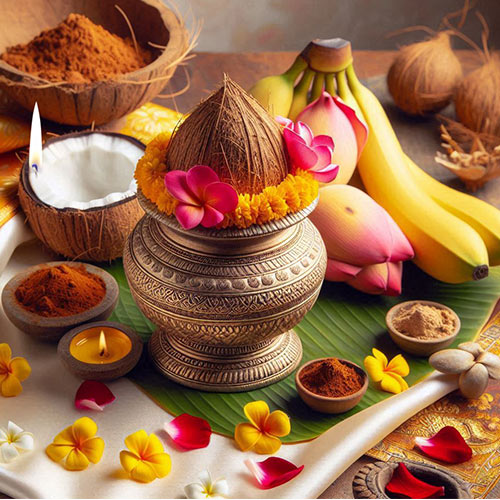
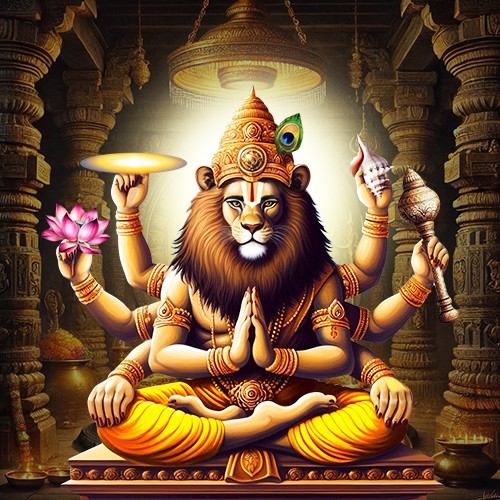
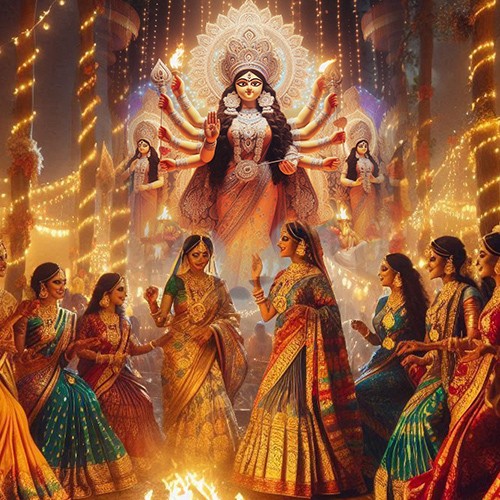
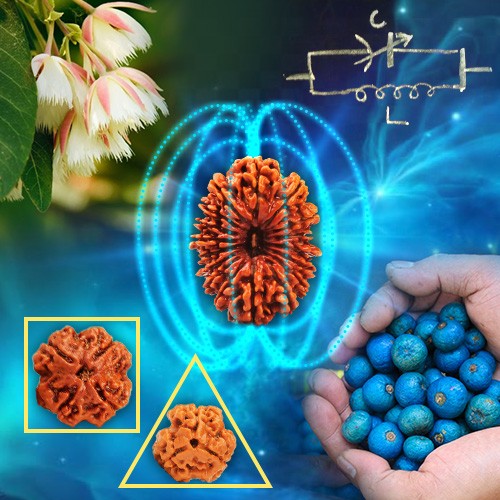

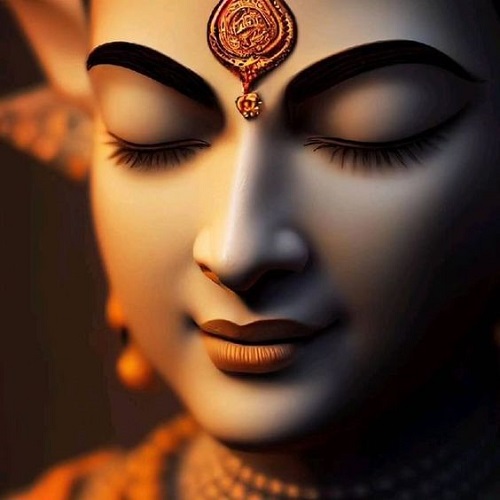
.jpg)
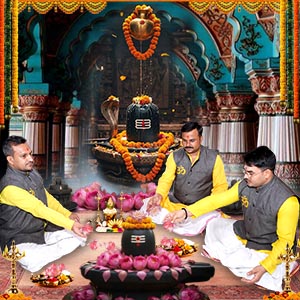
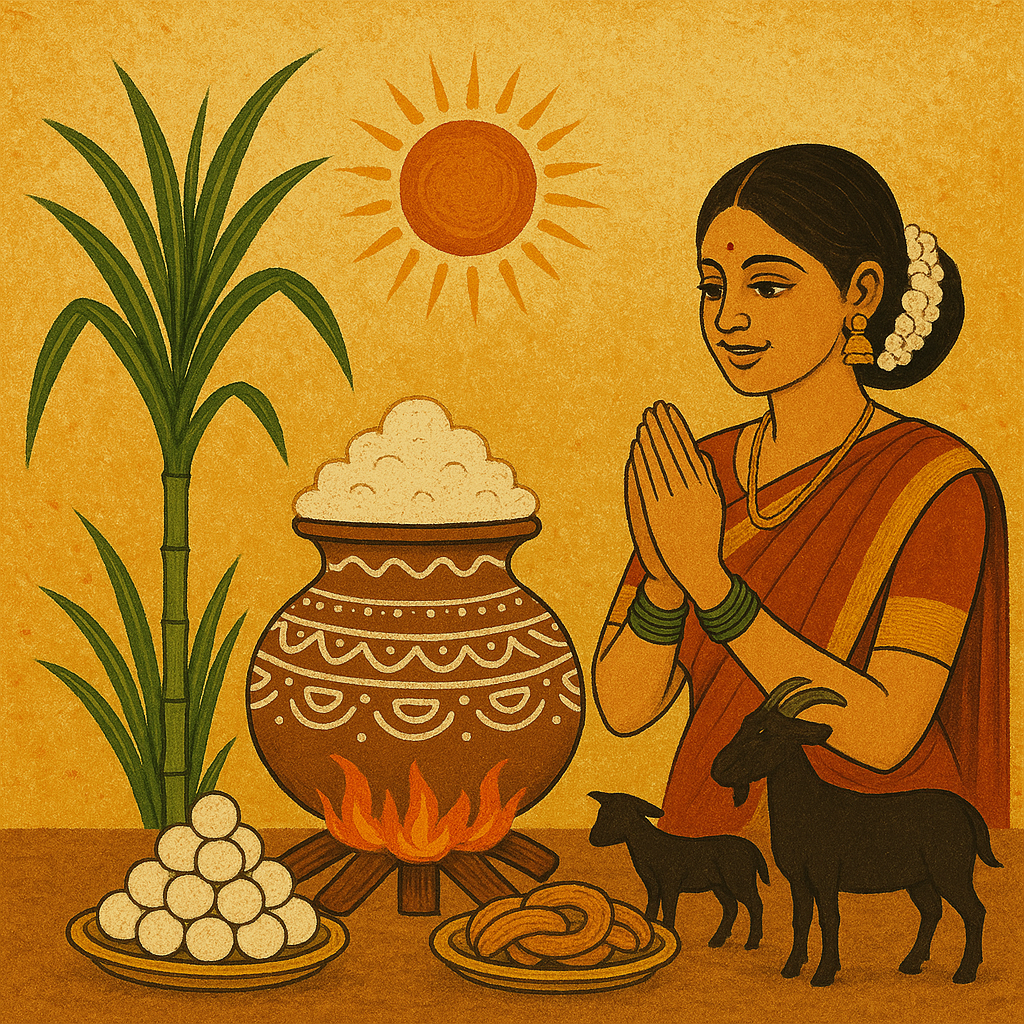

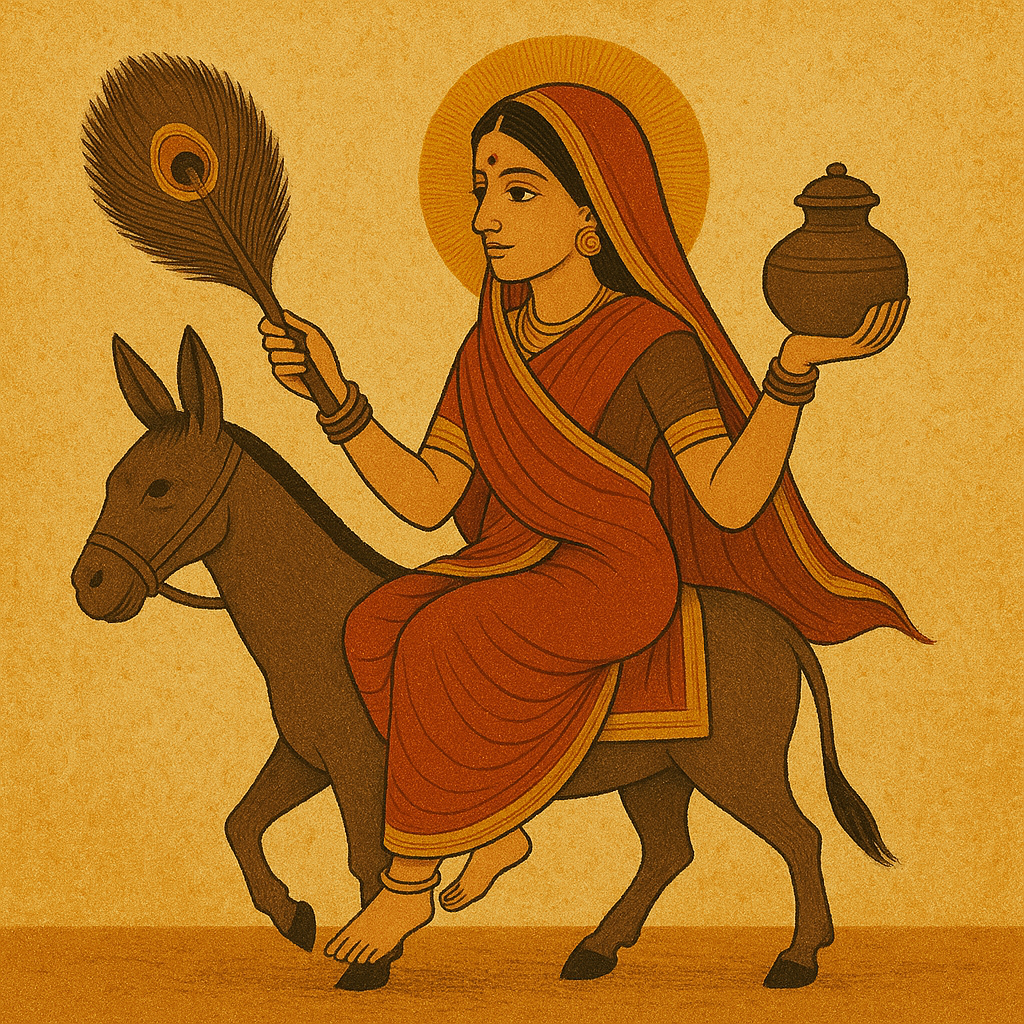
Comments 0
Leave your thought here